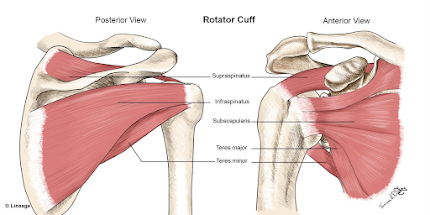Many thanks to dynamic duo podiatry team, Drs. Walter D'Costa and Kevin Grierson, for their collaborative care of patients and for their Grand Rounds presentation on Everything Foot this week.
A recording of their presentation is available HERE .
Dr. D'Costa started the presentation with the practice changing pearl of the day:
***Remind our patients (at high risk for foot problems) to change their shoes 1-2 times per day to relieve pressure.***
This is such a great pearl-- definitely not part of my regular prevention spiel, but an easy daily practice that can help prevent chronic friction issues with the same pair of shoes.
A review of the three common categories of foot ulcers: neuropathic, vascular, and ischemic.
1) Neuropathic ulcers result from insensitivity (i.e. neuropathy), inability to perceive pain, which leads patients to walk on bony prominences, and then to get skin breakdown, which can become chronic. Neuropathic ulcers present with some key features:
- hypertrophic rim of callous
- fibrotic wound bed
- painless
- not very much necrosis (compared to vascular ulcers)
The heel is a common site of pressure (in patients with heel ulcers, don't forget to screen for restless leg syndrome, which can lead patients to rub heels and lead to neuropathic ulcers)
- diabetic foot exams
- patient doing daily foot check
- changing shoes frequently
- OFFLOADING is key (inserts, change in shoe, etc)
- Aggressive debridement by podiatry, wound vac as needed
- Good diabetes control
- Sometimes excision of the bony prominence
- brown discoloration (stasis), chronic edema (often decades)
- dry skin--> scratch--> opening/fissures--> infection--> infected ulcers (pearl: Make sure patients with venous stasis hydrate their skin daily with lotion/cream, even baby oil)
- usually these do not have hyperkeratotic margins
- these often weep (and weep and weep)
- Control EDEMA via compression stockings, diuretics, elevation, venous pump/sequential pump (these pumps are DME covered by most insurances, particularly if patient has chronic stasis and/or hx of an ulcer)
- lotions to keep skin moist
- Sharp debridement by podiatry
- Enzymatic dressings, wet-to-dry dressing, calcium alginate (absorptive of weeping), hydrocolloid, silver-impregnated gauze
- Antibiotics if infected
- Biopsy the ulcer (if don't improve with good treatment)
- Grafting
- NEED revascularization
- For heel decubitus ulcers, always get x-ray to rule out osteomyelitis because these are by definition unstageable
- If you see a red hot foot in a diabetic, don't forget charcot arthropathy: red/hot/swollen foot, "rocker bottom" must be treated with immobilization, can appear like acute infection (elevated WBC, ESR, but these don't improve with abx)
- Edema Wear has a number of excellent products, including open toe stockinettes, for compression products that may be more useful to patients who have trouble using compression stockings.
- Also consider less rather than more compression if the patient is not going to wear compression stockings at all. Some is better than none.
- single nail (usually the large toe)
- >3mm width of pigmented band
- more irregular border
- recent changes (e.g. increase in size, rapid growth)
- family history of melanoma
- Hutchinson's sign: pigment in the nail extends to the nail fold
benign ethnic melanonychia subungual melanoma
- Debridement (symptomatic relief)
- Topical medications: tavaborole 5%, ciclopirox 8% lacquer don't have high efficacy rates but can work for some patients
- Oral medication: terbinafine (Lamisil), itraconazole
- mycologic cure rate for terbinafine is 70%, itraconazole 54%
- complete cure 38% for terbinafine, 14% for itraconazole
- elevation in AST/ALT is VERY rare with terbinafine, <1% and generally self resolve, serious life transaminitis is even more rare 1/500K-1/120K
- Alternative therapies for onychomycosis include apple cider vinegar, tea tree oil.There aren't great studies, but apple cider vinegar does contain maleic acid, which has fungicidal properties, and tea tree oil may have synergistic effect with topical antifungals
- Fracture is common (10-25% of people w/associated phalanx fracture). For this reason, these toes should get x-rayed.
- For symptom relief, trephination (cool word, definition: to open with a hole saw (i.e. trephine)) with a simple 18 g needle is safe and effective (spin, painless, no anesthesia required). You may need to make more than one hole. Go for it!




















